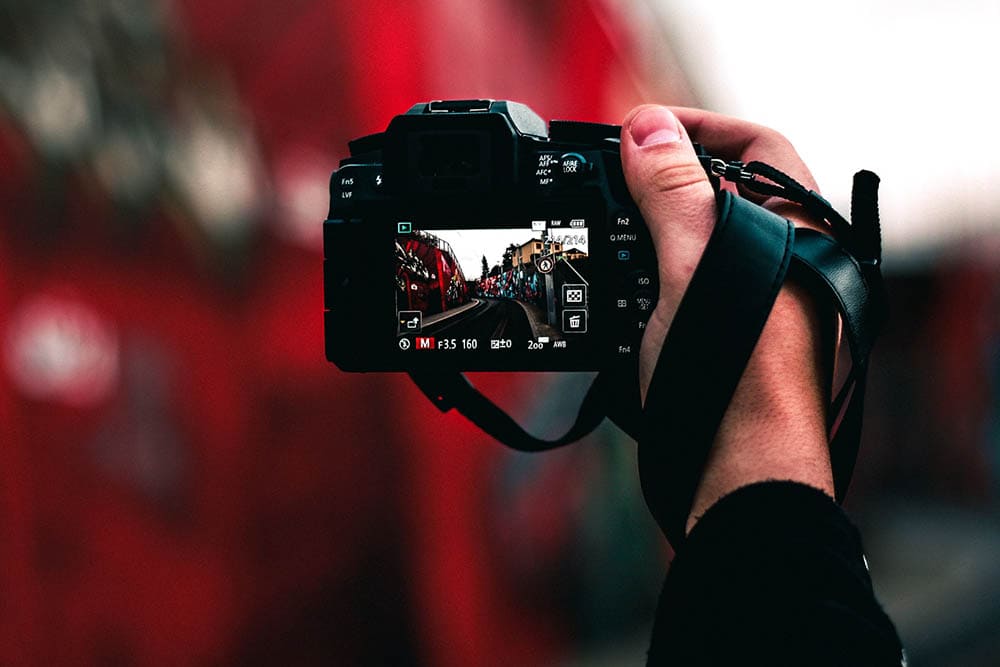What Is Shallow Depth of Field? How Do I Make Use Of This?
Last Updated on

If you’ve been learning about photography and have come across the term “depth of field,” you might be wondering what this means. Depth of field (DOF) is a vital concept for optical imagery, and here we’ll explain what it is and when to employ it in your photos so you can take the best pictures possible.

What’s the Difference Between Shallow and Deep Depth of Field?
Shallow DOF is when the plane of focus is very small, whereas a deep DOF keeps more of the image in focus. It’s a brilliant tool for portraiture, still-life, and macro photography. There are a few ways to create this effect, which we’ll cover in a moment.
How to Get Shallow Depth of Field
To acquire a shallow DOF, you’ll want to prioritize three things: a fast aperture, a long focal length, and a close subject.
Aperture
F-stops that are lower in number will result in a shallower depth of field than that of higher numbers. For example, f1.4 would have a shallower DOF than f11. It also means that lower f-stops will increase the amount of light that the lens captures and, therefore, will have a brighter result if all other parameters are the same. You’ll need to be careful, though, as fast apertures can be difficult to maintain focus on moving subjects.
Focal Length
A telephoto or super-telephoto lens will be dramatically better in terms of a shallow DOF. This is because the plane of focus becomes smaller, and the subject of the photo will be perceived as closer. Additionally, if you have a crop-sensor camera or are using an optical zoom feature, this won’t affect the DOF because it is based solely on the lens element.
Subject Distance
If you are focusing on an object, person, or animal that is far away, it will have a deeper DOF than if they were much closer. This is why something like macro photography will always seem to have a blurry background. It is because the lens is so close to the subject, whereas a vast landscape of dunes or mountains is too far to effectively take advantage of this. So, it can be a good idea to see what the minimum focusing distance of your lens is.

Are There More Ways to Create a Shallow Depth of Field?
Although this doesn’t technically change the depth of field, there are some technological tools that artificially add this effect through software intelligence. In doing so, the application at hand may detect the subject and add a blur to the image, which could be good enough for what you need. However, it does have some limitations that make it look fake.
Still, technology has gotten much better, and it can often be difficult to tell the difference. Most modern smartphones have a feature that enables you to make use of this feature.
Final Thoughts
Controlling your DOF is a crucial way to provide intention in an image. However, it must be used cautiously because using the wrong depth of field can make or break a photo. Remember, a shallow depth of field is a way to separate the background from your subject, but in the end, it’s up to you how you can make use of this to achieve your desired result.
You might be interested in:
Featured Image Credit: Miha Jan Strehovec, Unsplash
About the Author Robert Sparks
Robert’s obsession with all things optical started early in life, when his optician father would bring home prototypes for Robert to play with. Nowadays, Robert is dedicated to helping others find the right optics for their needs. His hobbies include astronomy, astrophysics, and model building. Originally from Newark, NJ, he resides in Santa Fe, New Mexico, where the nighttime skies are filled with glittering stars.
Related Articles:
How to Collimate Binoculars: 9 Expert Tips
Binocular Magnification Chart: Numbers & Distances Compared
How to Clean a Refractor Telescope: Step-by-Step Guide
How to Clean a Telescope Eyepiece: Step-by-Step Guide
What Is the Best Binocular Magnification for Hunting? Optical Features Explained
How to Clean a Rifle Scope: 8 Expert Tips
When Were Binoculars Invented? History, Today & Future
Can You Use Binoculars to Look At Stars? How to Choose the Right Pair
